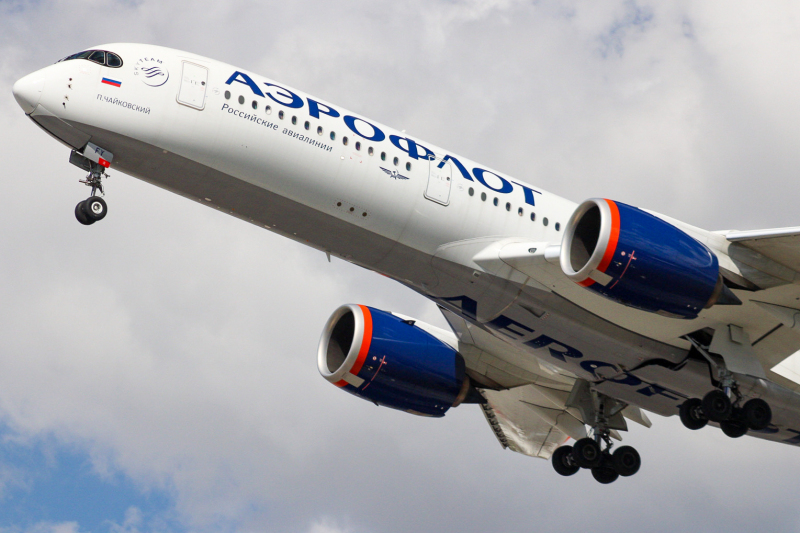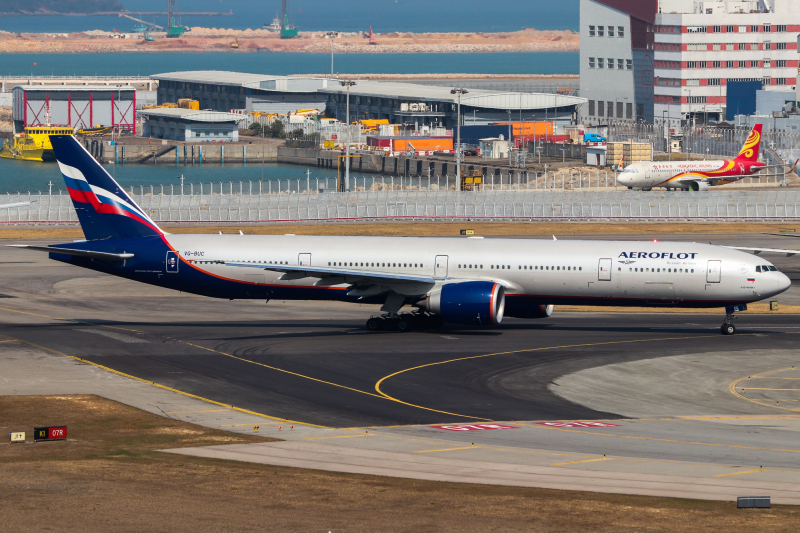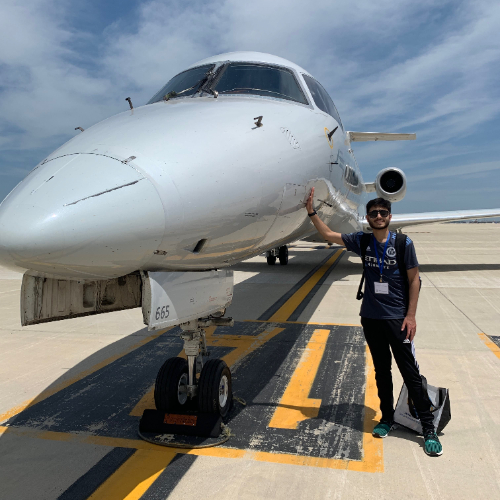The idea of having children visit the cockpit of an aircraft raises few eyebrows nowadays due to the assumption that the plane is not in flight and the pilots, who are not occupied with controlling the plane, have allowed the visit.
The narrative understandably changes when the scenario changes to the aircraft being in flight. Having children or any otherwise unauthorized individual visiting the cockpit during this time is a risky endeavor. Such a scenario was present in the tragic case of Aeroflot Flight 593.

Background
On March 23, 1994, Aeroflot Flight 593 operated a regularly scheduled flight from Moscow's Sheremetyevo International Airport (SVO) to Hong Kong's now-defunct Kai Tak Airport. The aircraft operating was a nearly three-year-old Airbus A310-300 registered F-OGQS and one of five A310s in Aeroflot's fleet at the time. The A310 is a widebody aircraft that can accommodate between 220 and 240 passengers, depending on the cabin configuration.
On this particular day, Flight 593 had a rather light load with just 63 passengers and 12 crew. Forty passengers were Russian nationals, while the remaining 23 were foreigners from Hong Kong and Taiwan. The trio in charge of commandeering the A310 that day were Captain Andrey Viktorovich Danilov, First Officer Igor Vasilyevich Piskaryov, and Relief Captain Yaroslav Vladimirovich Kudrinsky.

All three aviators had a wealth of experience flying Russian-built aircraft but still spent many hours on foreign-built planes like the Airbus A310. Despite having over 9,500 flight hours, Captain Danilov had around 950 hours in the A310. First Officer Piskaryov had 5,885 flight hours, with 440 in the A310. Finally, Relief Captain Kudrinsky had over 8,400 flight hours, 907 of which were in the Airbus A310. These gentlemen were familiar with flying the A310.
What Went Wrong?
Kudrinsky had brought along his two children, who were going on their first international flight. While the flight was airborne and cruising, he invited them to the cockpit while on duty. Because the A310 was cruising, the autopilot was active, so none of the three pilots were operating the aircraft. However, against regulations, Kudrinsky let his children sit at the controls of the A310, which, in the end, proved to be the life-or-death situation for Flight 593.

Kudrinsky's 13-year-old daughter, Yana, sat in the Captain's seat. Nothing significant was reported during Yana's time "at the controls." However, Kudrinsky slightly adjusted the autopilot to give his daughter the impression that she was turning the plane. After Yana's turn was up, Kudrinsky's 15-year-old son Eldar occupied the seat. Eldar applied enough force to the control column that the flight computer switched the plane from autopilot to manual control of the ailerons.
Now, a 15-year-old was in control of the Airbus A310. When the autopilot disengaged, a silent indicator light alerted the pilots. However, the pilots had most experience flying Soviet aircraft that were built with audible warnings. Therefore, despite all three having significant experience on the A310, none were able to notice the disengagement warning.
.jpg)
Soon after, the plane began banking continuously to the right. This continuous turn caused a 180-degree turn on the flight computers. As reported by the flight recorders, the pilots were confused about this reading for nine seconds. The plane's bank angle increased from 45 to 90 degrees during those nine seconds.
The A310 is not designed to turn so steeply while maintaining its cruising altitude. Because of the steep angle, it became too difficult for the pilots to regain control. Despite not controlling the ailerons, the autopilot was still controlling the pitch and thrust. As such, the thrust was increased, but the nose pitched up steeply, which caused the plane to stall. This eventually caused the autopilot to switch off, sending the aircraft into rapid descent.
.jpg)
The pilots were able to regain access to their seats somehow. First Officer Piskaryov managed to pull out of the dive but overcorrected, putting the plane into a near-vertical ascent, which stalled the A310 again. This stall then sent the plane into a spin. Kudrinsky then almost recovered from the spin but also pulled back too aggressively. This caused the speed to drop and then eventually another spin.
Kudrinsky and Piskaryov managed to recover control and level the wings again. Sadly, it was too late because their altitude was too low to recover. Aeroflot Flight 593 crashed into a remote hillside in the Kuznetsk Alatau mountain chain. All 75 occupants perished on impact.

Aftermath
In the wake of Flight 593's demise, stricter restrictions on cockpit access were implemented. Nowadays, the flight cockpit has been strictly off-limits to passengers, especially children. Pilots, standby employees in some cases, and individuals with expressed consent from the airline and crew are the only ones able to access the cockpit in flight these days.
The example of Captain Kudrinsky was meant in good faith. He was a proud individual trying to show his children what their father did for a living. Unfortunately, this bonding moment took a turn for the worse. A similar instance transpired earlier this year in Brazil when a pilot flying under the influence ceded control of his propeller aircraft to his minor son. This ended up leading to the aircraft's crash and both of their demises.
Comments (0)
Add Your Comment
SHARE
TAGS
INFORMATIONAL Aeroflot Russia Airbus A310 A310-300 Incident Safety History Crash SVO MoscowRECENTLY PUBLISHED
 Learjet Owned By Vince Neil Crashes Into Gulfstream Jet, 1 Fatality Confirmed
On February 10th, around 14:30 local time, a Learjet private jet aircraft crashed into another private jet after landing at Scottsdale Airport (SCF) in Arizona.
NEWS
READ MORE »
Learjet Owned By Vince Neil Crashes Into Gulfstream Jet, 1 Fatality Confirmed
On February 10th, around 14:30 local time, a Learjet private jet aircraft crashed into another private jet after landing at Scottsdale Airport (SCF) in Arizona.
NEWS
READ MORE »
 Seattle Plane Strike 2025: Japan Airlines and Delta Collision Raises Safety Concerns
Seattle-Tacoma International Airport saw a concerning incident on Wednesday morning when a Japan Airlines (JAL) plane clipped a parked Delta Air Lines jet while taxiing. Thankfully, no one was injured, but passengers described the collision as a frightening experience.
NEWS
READ MORE »
Seattle Plane Strike 2025: Japan Airlines and Delta Collision Raises Safety Concerns
Seattle-Tacoma International Airport saw a concerning incident on Wednesday morning when a Japan Airlines (JAL) plane clipped a parked Delta Air Lines jet while taxiing. Thankfully, no one was injured, but passengers described the collision as a frightening experience.
NEWS
READ MORE »
 Ethiopian Airlines Expands Cargo Fleet with New Boeing 777 Freighter
Ethiopian Airlines has expanded its cargo fleet with a brand-new Boeing 777 Freighter, registered as ET-BAB (MSN 68140). The aircraft was delivered directly from Boeing’s factory in Everett, Washington, USA, and landed at Addis Ababa Bole International Airport at 3:41 PM (GMT+3) on Wednesday, January 22, 2025.
NEWS
READ MORE »
Ethiopian Airlines Expands Cargo Fleet with New Boeing 777 Freighter
Ethiopian Airlines has expanded its cargo fleet with a brand-new Boeing 777 Freighter, registered as ET-BAB (MSN 68140). The aircraft was delivered directly from Boeing’s factory in Everett, Washington, USA, and landed at Addis Ababa Bole International Airport at 3:41 PM (GMT+3) on Wednesday, January 22, 2025.
NEWS
READ MORE »





